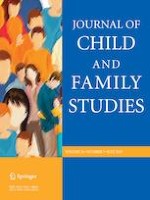07-04-2022 | Original Paper
Implicit Self Esteem Moderates the Association Between Explicit Self Esteem and Externalizing Behaviors
Gepubliceerd in: Journal of Child and Family Studies | Uitgave 7/2023
Log in om toegang te krijgenAbstract
The self-esteem construct has failed to demonstrate a consistent association with externalizing behaviors in children, leading to a basic question in the field: What is healthy self-esteem? From this has emerged evidence that self-esteem is represented at both explicit (Explicit Self Esteem; ESE) and implicit levels (Implicit Self Esteem; ISE). Studies with adults have found that discrepancies between ESE and ISE (e.g., high ESE, low ISE) are associated with narcissism and anger management difficulties. However, ISE is rarely studied in children and adolescents. This study explores whether ESE, ISE, and maltreatment (physical abuse yes/no) are associated with externalizing behaviors in a sample of children in foster care. A total of 161 children between the ages of 8 and 13 participated; 64.1% were African American and 53.9% were female. Children reported on ESE (Self-Perception Profile for Children; SPPC) and ISE (Name Letter Task; NLT). Foster parents completed the Child Behavior Checklist (CBCL) and caseworkers completed the Child and Adolescent Needs and Strengths (CANS) to assess children’s externalizing behaviors. The two consistent results across both analyses were that ESE alone and the three-way interaction between ESE, ISE, and physical abuse were associated with fewer externalizing behaviors. Probing the interaction revealed that children who had not experienced physical abuse and had discrepant self-esteem (low ESE, high ISE) experienced the highest levels of externalizing behaviors. These results indicate that both conscious and non-conscious aspects of self-esteem, notably their discrepancies, should be considered in mental health interventions, assessment, and research.
